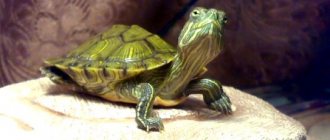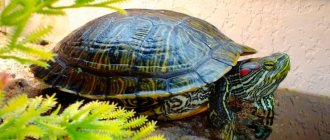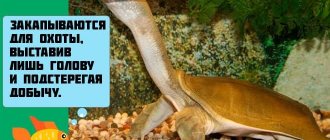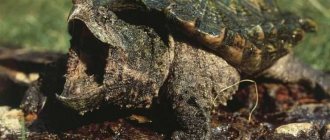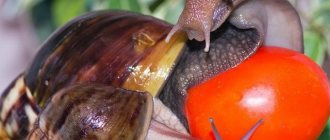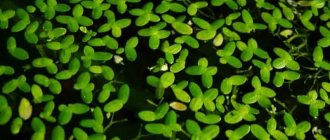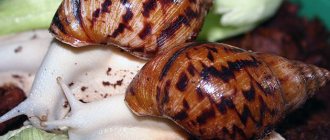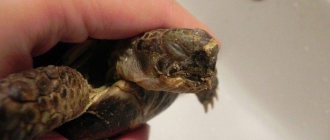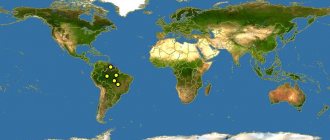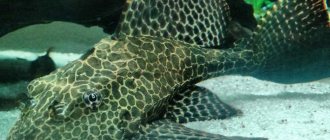Maintenance and care
Since the Central Asian turtle is a land reptile, it is easier to care for than sea turtles. You can take it with you on a trip in a box or a special portable container. Also, such turtles are very picky in food.
Arrangement of the place
A spacious glass, wooden or plastic terrarium, with the ability to move freely, is suitable for the animal. The size of the terrarium is at least half a meter in length and half a meter in width, or more. The bottom should be covered with large pebbles or special soil for reptiles (it consists of hard clay and coarse sand with small stones), which can be purchased at a pet store.
Terrarium for a land turtle
In addition, you can line the bottom with dry sawdust, hay and wood chips. In the terrarium you need to place a house, an ultraviolet lamp, an incandescent lamp, a feeder, and a thermometer. An ultraviolet lamp provides the illumination that they receive in nature from sunlight.
They get calcium and vitamin D from the ultraviolet lamp.
Place it at a height of 30 cm from the animal.
The main incandescent lamp is the main source of heat in the terrarium. If there is a lack of warmth, the animal may have problems with the functioning of the gastrointestinal tract, the food inside will rot and the pet may get sick. Therefore, it is so necessary to maintain an optimal temperature of 25–30 °C.
The temperature can be adjusted by changing the bulbs (from more powerful to weaker and vice versa).
It is also worth avoiding drafts, as reptiles unaccustomed to cool temperatures quickly become ill.
It cannot be kept on the floor without a pen or enclosure, this has an extremely negative effect on its health.
Diet and feeding
The Central Asian should be fed a variety of plant foods. Fresh or dry herbs.
It is not recommended to place food on the ground - use a feeder
Among them:
- Dandelion.
- Plantain.
- Burdock.
- Rhubarb.
- Chamomile.
- Clover.
- Sorrel.
- Timothy grass.
- Oregano.
- Aloe.
- Thistle.
- Petunia.
In addition, you can give your pet sprouted grains of wheat, barley, millet, peas, corn, and sunflower. You can also give the animal branches of fruit plants: pears, cherries, apple trees. Also, reptiles will not refuse hay.
Also suitable are fortified foods, available in a large assortment in pet stores. But it is better not to abuse them.
It is enough to feed your pet with a vitamin complex once a week. What food is not suitable for feeding?
Any human food:
- Meat.
- Fish.
- Dairy products.
- Seafood.
- Bread.
- Eggs.
- Food intended for other pets (cats, dogs, parrots).
Young turtles need to be fed every day.
Older turtles feed once every two to three days.
Bathing
Bathing your reptile should be done once a week. The water should be warm, but not hot, approximately 30 - 40°C. There is no need to rub the shell with a brush, as this can injure the horny plates or even deform the shell. If you use soap to bathe your pet, it should be hypoallergenic.
Before bathing, stock up on a basin and a brush, foam sponge or rag
Again, do not abuse it - twice a month is enough.
Water procedures should not last more than 30 - 35 minutes.
After bathing, dry your pet with a dry paper towel or soft cloth. It is worth noting that during bathing the pet replenishes its water-salt balance.
Reproduction
At home, Central Asians become capable of reproduction at the age of six years.
The mating season begins after winter hibernation ends.
From early spring to July, females lay eggs in the ground. Turtles hatch on average after 12 weeks. They remain in the hole until the next season. Egg laying occurs two to three times per season.
The maximum incubation period is 65 days at temperatures from +28° to +30°
Keeping a Central Asian turtle at home
For a long-term life in captivity, the Central Asian land tortoise requires a spacious home, equipped according to the pet’s habits. Some breeders make large pens for her in the local area in the summer. If this is not possible, you still need to take the reptile out into the air and into the sun more often
The important thing in keeping a Central Asian land turtle is to provide it with more space to live, so it will remain active and healthy for many years. Place the reptile in plastic boxes, aquariums, terrariums
Terrarium for the Central Asian turtle
For a Central Asian land turtle, when kept in a terrarium for a single individual, an area of at least 60x130 cm is recommended, and better yet, even more. Home improvement:
- The vessel is selected as a horizontal type with top and side ventilation.
- The temperature in the terrarium should be at 25-27°C, in a separate corner under a lamp - up to 33°C.
- A 40 W daylight bulb is fixed on the lid for heating and illumination at a height of 20 cm. The heat ensures the normal functioning of the turtle’s body.
- You definitely need to put up a shelter that acts as a hole. An inverted box or half a pot is suitable for this.
- Sometimes a container of water is placed in the terrarium, but this is not necessary - the turtle needs lush grass and weekly baths to saturate the body with moisture.
Soil for the Central Asian turtle
It is important to know what the Central Asian tortoise needs so that it feels almost like it is in the wild. Steppe reptiles love to dig
In a vessel in the corner you need to pour a layer of earth with coconut shavings. Sand is not used; the Central Asian turtle is able to swallow it and clog its insides. The soil must be moist, the layer 10-15 cm, so that the reptile can burrow into it. In a turtle house in a warm corner you need to pour pebbles and put voluminous flat stones. They help reptiles sharpen their claws. In addition, turtles love to climb onto rocks and bask under a light bulb.
Lamp for Central Asian tortoise
In addition to heating, the Central Asian land tortoise needs a UV emitter at home. For this purpose, 10% UVB lamps for reptiles have been developed; they do not emit heat into the terrarium, but supply it with ultraviolet light. UV rays are important for the production of vitamin D3 and the absorption of calcium by the body, on which the hardness of the skin depends. The lamp is attached at a level of about 25 cm. The acceptable operating time is 5-12 hours a day.
Natural habitat
Where do Central Asian turtles usually live? Probably in Central Asia. The way it is. In nature, this reptile can be found in semi-desert areas of Central Asian countries, in southern Kazakhstan, India, Pakistan, Iran, Afghanistan, in the southern regions of Russia, on the coast of the Caspian Sea. They love space, warmth and dryness. Sandy steppes, fields, agricultural crops, clay semi-deserts - these are the places where Central Asian land tortoises feel best. Home care should be such that the climate resembles the turtle’s natural habitat.
Maintenance and care
The care your landlubber will need is not particularly difficult. But there are a number of conditions that must be met.
How to choose the right house?
cardboard box
Therefore, proper care and maintenance of a turtle implies the presence of a well-equipped terrarium where your pet will feel as comfortable as possible.
Arrangement of the terrarium
- An ordinary glass aquarium is perfect for these purposes. The size of the turtle house should be such that its inhabitant can move freely in it. To keep one individual, a tank with a volume of about one hundred liters will be enough. The width of the house must be at least 3 times larger than its occupant.
- You need to build a special house inside the terrarium so that your land friend can hide and relax alone. You can purchase it at a pet store or make it yourself from plywood.
- Next, you should carefully choose the soil with which the bottom of the terrarium will be lined. The thickness of the coating can vary from 5 to 10 cm. For these purposes, you can use medium-sized pebbles (small animals can swallow) or sawdust, but their disadvantage is that they get dirty very quickly. The ideal option would be hay with the addition of pebbles. Do not use cat litter, sand or soil as bedding. Ingestion of such soil by a turtle can lead to serious health problems.
- A home terrarium should have a microclimate that is as close as possible to the animal’s natural habitat. The temperature should vary within + 25-30 degrees. To ensure the proper temperature, a 75 W incandescent lamp is installed at a height of 30 cm from the bottom of the terrarium. There should be a separate place under the heat source, where the temperature reaches +33-35 degrees. A special ultraviolet lamp for reptiles is required, the rays of which are similar to those of the sun. It should be 30 cm from the animal. Under the influence of ultraviolet radiation, the animal’s body produces vitamin D3 (cholecalciferol), which helps it absorb calcium.
Caring for a land turtle necessarily includes a bathing procedure. This helps to stabilize the water-salt balance, replenish moisture reserves in the body and normalize the functioning of the gastrointestinal tract. It is recommended to bathe the animal in warm water (+32-35 degrees) once every two weeks.
Lighting and heating
The optimal temperature for keeping this type of turtle is +25-27°C. In addition, there must be a place heated by a lamp. The temperature here should be +30-33°C. The turtle will move itself to where it is more comfortable.
As you know, in nature they live in hot climates, but when the temperature rises too high or drops sharply, they go into burrows where it is stable. An incandescent lamp is quite suitable for heating, but it must be adjusted in height so that your pet does not get burned. Typically this distance varies from 20 to 30 cm.
Heating is very important for this species of turtle. Daylight hours, including lightening, should be at least twelve hours. Additionally, you will need a UV lamp for your turtle. In pet stores today you can purchase such special devices for reptiles. They have an enhanced spectrum of UV rays. In nature, they get them naturally. But in captivity, the owner is obliged to compensate for this deficiency.
A UV lamp is vital for a turtle. The thing is that without these rays, animals do not produce vitamin D3, and the formation of calcium, which is necessary for shell growth, deteriorates.
How to buy a healthy turtle
In order not to encounter difficulties at the first meeting, you should pay close attention to the health of your future pet already at the time of purchase.
What should you immediately pay attention to?
- The behavior of a reptile is how active it behaves, how it moves, and whether it moves at all. If a turtle has poor coordination of movement, this can be detected almost immediately.
- Appearance – the carapace and plastron must not be damaged, chips and cracks are unacceptable. A healthy individual has skin without cracks, wounds, or spots. Their presence (not related to the breed feature) on the shields is also suspicious.
- Armor shields must have the appropriate shape, the shields are even, tightly adjacent to each other, without gaps.
- The oral cavity also makes it possible to assess the condition of the reptile - if the mucous membranes are light pink, without plaque, and no viscous salivary fluid is secreted, then everything is fine with the turtle.
- There should be no mucus released from the nasal cavity.
It is important to take care of transporting your newly adopted pet. If you are driving/walking nearby and it’s summer outside, you can place the reptile in a cardboard box with several sheets of paper on the bottom
In the autumn-winter period, it is better to protect the turtle by covering it with a warm cloth and placing a heating pad in the container.
Feeding the Central Asian turtle
Central Asian tortoise photo
It is no secret to many people that the key to a pet’s health is high-quality and varied nutrition. The main diet of Asian turtles in natural conditions consists of ordinary plants with a high fiber content, therefore in captivity they should be fed plant foods: clover, dandelion, plantain and some other herbs. COLLECT YOUR GRASS AWAY FROM ROADS AND HARMFUL PRODUCTS and do not feed UNKNOWN plants, they may be POISONOUS!!!
In today's world, there is absolutely no point in collecting, since there are a lot of commercial feeds that are enriched with vitamins and calcium. As a treat, turtles can be given lettuce leaves, berries, vegetables and fruits, such as cucumbers, bananas, apples, pumpkin, once a week.
An adult animal is fed once every two days, and small turtles once a day.
Never give turtles meat, cottage cheese, fish or other human food, as their digestive system is not capable of digesting these foods.
Summer aviary.
I’ll also make a reservation about the summer enclosure. Some owners believe that living outdoors is best for turtles' lives, but I don't entirely agree with this statement. Yes, turtles receive natural ultraviolet light, live grass, and a lot of space, but these advantages are accompanied by constant changes in temperature, wind, rain, and stress from moving. There is also a possibility that the pet will make a dig and run free, or someone will drag it away. In general, I would not risk the life and health of the animal, because all the necessary conditions can be created for him at home, to which he will quickly get used to.
Compatibility: The Central Asian tortoise is quite territorial and is aggressive towards its neighbors, so it is best to keep it alone.
In the end, I would like to say that the turtle is a living creature that requires care. There is no need to unnecessarily disturb the turtle, create a personal little world for it and let it live its own life. Don't take him for walks around the apartment, don't pick him up often. Follow the recommendations listed and everything will be fine. If you have any questions or want to share your experience, then welcome to our forum: https://fanfishka.ru/forum/. Every person’s experience is priceless, and therefore we will be glad if you share it with us.
Author Kirill Vorobiev
Central Asian tortoise video review
Category: Aquarium articles / Aquarium turtles, frogs, etc. | 493 | Date: 4-03-2018, 11:03 |
We also recommend reading:
- – Hydrocotyla white-headed
- – Rotals
- – Rotala Bangladesh
- – Rotala rotundifolia or rotundifolia
- – Rotala green macrandra
Outdoor aviary
In order for the Central Asian tortoise to receive more sunlight and fresh air, in the summer it can be kept outside in a spacious and well-equipped enclosure measuring 2x2 m or more.
A fence well buried in the ground (30 cm) and large stones placed in its corners will help to avoid undermining and escape of your pet. At night, she will hide in a burrow house, which you can make yourself.
You can put a shallow container of water for bathing, from which she can get out on her own.
Reproduction
To get offspring from these reptiles, you need a couple consisting of a male and a female. It is desirable that they match each other in age and weight. Females are ready for mating only at 10-12 years of age, males at 5-6 years of age.
The mating season for these reptiles is February-August. You can understand the intentions of the turtles by the behavior of the male - he approaches the potential bride, stretches his neck and knocks his carapace on her side, making dull, chattering sounds. During weddings, males begin to fight especially fiercely with competitors, so it is not worth keeping even 2 individuals of this sex in the same tank.
If the fertilization process was successful, then after 8 weeks the female will begin laying a clutch of 2-6 eggs. And after 2 months, little turtles will be born. At low temperatures you can expect males, at high temperatures - females. If the indicator fluctuated, then the litter will contain individuals of both sexes.
The Central Asian land tortoise may seem like a boring pet - slow, inactive, and unemotional. Indeed, comparing a reptile with cats, dogs or rodents is pointless; they are too different. But turtles are not devoid of originality and originality; they give the owner the opportunity to escape from the frantic rhythm of life, stop and remember that it is so easy to feel joy and peace.
How to care for a Central Asian land turtle
Like other pets, the reptile needs care and careful handling. You shouldn’t pick her up often; because of this, the turtle can become very frightened, stressed, adapt less well to new conditions, and get sick more often.
Pet and children
A land turtle is not a toy, so children need to be explained what can and cannot be done with such a pet. It is best if they interact with the turtle only under adult supervision.
Does a turtle need freedom?
You should not let your reptile roam freely – on the street or at home. No matter how funny it may sound, she is able to escape. And besides, turtles often get injured from such a careless attitude - they are accidentally kicked, stepped on, they get stuck in radiators and other narrow openings.
Bathing
If the terrarium is not equipped with a separate bath, then the turtle should be washed weekly. It is immersed in warm water up to the neck for 20-30 minutes. Young animals of this breed should be bathed more often - every 2-3 days.
Feeding
Such a pet should eat a varied diet:
- 70% of the diet – fresh greens;
- a quarter of the diet - pieces of fruit;
- 5% – sources of proteins, minerals and vitamins.
Young turtles up to 2 years old are fed abundantly, food is given twice a day. Adults feed less frequently – once every 2 days. The menu is allowed to include the following products:
- ready-made food intended for reptiles of this species;
- berries;
- pieces of vegetables and fruits;
- wildflowers and herbs, fresh in season, and then dried or frozen;
- leaves of fruit crops;
- indoor plants - tradescantia, chlorophytums.
Turtles happily eat garden (not river) snails and earthworms. Calcium supplements are also included in the diet. Occasionally, your pet can be treated to grapes, cucumber, onions, garlic, asparagus, and herbs.
Taming
An animal that has just been bought at the market and brought home may refuse food and spend months getting used to its new environment.
So that the reptile is not afraid and takes root faster, you need to feed it.
She will love a specially prepared dish of green lettuce, sliced pear, banana, apples, persimmons, carrots, which can be sprinkled with a small amount of calcium for reptiles.
To improve your pet's digestion, you can give him a warm bath.
Appearance
Their shell consists of 16 keratinized scutes on top and 13-15 similar scutes on the bottom. Another 25 scutes are located on the lateral surfaces of the shell. It has a round shape, slightly flattened at the top. On top, its color varies from olive-yellow-green to olive-brown. Dark spots are located on top of the main color; their color correlates with the color of the soil on which the turtle lives. The turtle's head and paws are brown. There are four clawed toes on the paws.
In nature, these animals live for 40-50 years, and in captivity under comfortable conditions, their life expectancy can increase.
What do steppe turtles eat?
Under natural conditions, reptiles feed on plant foods: grass, young shoots of bushes. Sometimes they can treat themselves to berries and fruits.
Home conditions require a varied diet for the turtle:
- 75-80% of the total amount of food should come from fresh greens and hay
- 5% should be vegetables
- 15-20% fruit
The prepared food should be placed in a plate or on a special surface, where the possibility of eating soil along with the food will be excluded. It is not recommended to feed the animal by hand.
As for the frequency of feeding, young individuals need to be fed daily. Adult turtles are usually given food once every 2-3 days. The serving volume should be approximately half the volume of the animal's shell.
Attention should be paid to the fact that excessive consumption of juicy food and fruits by the turtle can lead to the fermentation process beginning in the turtle’s stomach. It is not recommended to feed the turtle food from the owner’s table - this can negatively affect the pet’s health
It is not recommended to feed the turtle food from the owner's table - this can negatively affect the pet's health.
In order for the animal to receive the amount of calcium and other microelements it needs, it is necessary to include special mineral bait in its diet.
A land-dwelling pet does not require constant access to water, so there is no need to place a container with it in his house.
What kind of animal is this?
The Central Asian tortoise in some sources is called the steppe, Russian or Horsfield tortoise. Horsfield is an American naturalist who loved and observed these animals. Central Asian turtles, which are properly cared for and maintained, live up to 50 years. Violation of the detention regime reduces their period of residence to 10-30 years.
The steppe turtle is a typical representative of its family, this is exactly how we imagine turtles: short, with a round shell, gray-brown-yellow-green in color with dark spots. The turtle's "house" has two shells. The lower one is called the plastron; it consists of 16 keratinized scutes. The upper shell - the carapace - has 13 such scutes. They are covered with grooves, like a cut of a tree, and in the same way they determine the number of years a turtle has lived. Grooves are constantly added as the turtle grows throughout its life. The sides are also covered with 25 small shields.
This type of turtle is small, their average length is 15-20 cm, females are always larger. The front paws have 4 toes.
Description of the Central Asian turtle
The shell is low, the length can be up to twenty to twenty-five centimeters. The shape is round, flattened at the top; we can say that when viewed from above, the handicap looks like a pie. The color of the shell can be olive or brown-yellow. The spots on the shell of a land turtle are the color of soil and have a vague outline. The plastron is dark in color and has sixteen horny scutes. The turtle's carapace has thirteen horny scutes on which grooves are located. The front paws of the Central Asian turtle have four toes with claws. The upper jaw of these reptiles is hooked.
Male turtles have one horny tubercle on the back of the bird, while in females the number of horny tubercles can range from three to five.
It is worth noting that the females of the Central Asian turtle are always larger than the males of the same species.
If living conditions and other factors influencing the life of reptiles are favorable, then the animal can live up to fifty years
It is important to note that the turtle continues to grow throughout its life.
Feeding
How often should you feed your reptile? A Central Asian land turtle under the age of 2 years must eat every day; after 2 years, it can be fed every other day or even every 2 days.
The number of feedings per week depends on the size of the shell; individuals less than 10 cm long are fed daily, the rest - every 2-3 days.
The turtle should not eat directly from the ground; the food should be placed in a feeder. Experts recommend giving her as much food as she can consume in 5 minutes. To establish good relationships, sometimes you can feed the turtle by hand - this way it gets used to people faster.
As you can see, the turtle doesn’t eat much, so the menu should be complete and varied. Feeding her is not at all difficult; the vegetarian turtle loves seedless berries, lettuce, cabbage and dandelion. In winter, she can be given hay, dried clover and dandelion flowers, fruits, vegetables; as well as twigs and leaves of some indoor plants: aloe, cacti after removing thorns, tradescantia, hibiscus, hyacinth.
You should not get carried away with succulent foods; under natural conditions, the reptile eats them only in the summer, so their excess will cause gastrointestinal upset for it.
The turtle is not given spicy vegetables - garlic, onions, horseradish, hot peppers, cherries, sweet dried fruits, as well as food from their table - eggs, bread, potatoes, dairy products. Additionally, the animal needs to be fed with vitamins and minerals purchased at a veterinary pharmacy or pet store, as well as insects.
Absolutely forbidden!
The following list of products is not only harmful, but can seriously harm the Central Asian tortoise. Her care needs to be organized in such a way that items from this list never end up in her bowl.
- Plants or parts thereof containing toxic substances. These are most popular indoor plants, potato tops, jasmine, lilies, nightshades, daffodils, rhododendrons.
- Eggshell.
- Fruit seeds.
- Citrus peel.
- Dry food for other types of pets.
- Meat and fish.
- Ready meals for people.
In a turtle, all digestive processes work very slowly; substances that are not intended for it by nature are not able to be absorbed. The result is kidney failure.
Food and drink
Proper care of the Central Asian turtle involves its proper feeding. Its specifics depend on the age of your pet. For example, infants should eat daily. Adults (>10 centimeters long) – three times a week. The serving size is equal to half the size of the shell
It is also important to pour food directly into the feeder so that the animal does not accidentally swallow a piece of soil.
Feeding an Asian woman should first of all be varied. A large proportion of the diet consists of plant foods and greens. About 15% are vegetables. About 5% of the menu consists of fruits. It is forbidden to feed turtles meat and dairy products, fish, bread, and eggs.
Feeding and caring for a land turtle in winter will have to be different: 75% of its diet should be steamed hay, and the rest should be fruits and vegetables.
Also, land turtles need to enrich their body with vitamins and minerals. With a balanced diet, the reptile will receive all the substances it needs from natural products, but sometimes it may be necessary to purchase a vitamin complex. It must be taken in quantities strictly prescribed by the instructions, otherwise there is a risk of getting hypervitaminosis.
The fact is that this type of reptile gets the required amount of moisture from food and water sources. Land turtles love succulent food and plant foods: mainly, in this way, they replenish moisture reserves in nature.
But, in addition, your pet can replenish its water reserves with the help of baths. Water procedures are also useful from a hygiene point of view, so many experts recommend doing them several times a week for 40 minutes. Thus, you will combine caring for the Asian turtle with watering it at the same time.
To do this, you will need to pour enough water into a small basin so that it covers about 70% of the height of your turtle. The water must be heated to 32℃. If the reptile starts defecating while taking a bath, do not be surprised - these are the characteristics of their body. Just replace the water.
Home Diet Basics
At home, a land turtle does not have the opportunity to independently choose food, obtaining those products that its body needs at a particular moment. In addition, natural instincts are gradually dulled, which is manifested, for example, by the fact that it begins to absorb earth and small stones. Therefore, the owner of the reptile is responsible for the correct and balanced diet of the pet.
The most correct diet would be the following ratio of products:
- herbs, greens - up to 75-80%;
- vegetable and fruit crops, berries - 10-15%;
- cereals, seeds, bread - up to 5%;
- vitamin supplements, micro- and macroelements, animal proteins, amino acids - up to 5%.
As herbs, the greatest preference should be given to the following plant crops:
- dandelion and lettuce (leaves);
- beans, peas, beans (stems and leaves);
- alfalfa;
- plantain;
- clover;
- parsley;
- aloe;
- lawn forbs;
- thistle;
- sorrel;
- sprouted wheat and oat sprouts;
- some flowering plants.
All types of land reptiles love vegetables:
- pumpkin pieces;
- fresh chopped carrots;
- small leaves of young cabbage;
- mature chopped zucchini, squash, cucumbers;
- radishes and beets - only in young fresh form.
It is advisable to give your pet pieces of apples or pears every day, and occasionally watermelon, strawberries, strawberries, raspberries, currants, peaches, and apricots.
As a protein component, you can give both worms, insects, snails, and small pieces of boiled or raw meat.
An approximate menu for the day might look like this (in grams):
- sprouted sprouts (for example, wheat) - 50;
- raw young beets, chopped - 30;
- chopped white cabbage leaves - 30;
- chopped boiled potato tubers - 30;
- raw minced beef or chicken or earthworms - 5-10;
- pieces of wheat bread - 25;
- fish oil, vitamins, microelements - 1-3.
At least once a week, the diet includes small quantities of seaweed, various bran, sunflower seeds, yeast, soybeans, mushrooms, and ready-made nutritional mixtures.
Reproduction process
Between April and July, the female makes holes in the ground, into which she then lays eggs. One individual can make up to three clutches, each of which contains up to six eggs. At a temperature of +30 degrees and a humidity of 60-70%, the incubation period lasts from 60 to 65 days.
Between August and October, the eggs hatch into babies that are about 3cm in size.
At home, steppe tortoises can become parents at the age of 5-6 years.
For breeding, a female and two young males are required. After the mating process is completed, the female must be isolated immediately. For 2-3 months, the expectant mother is busy carrying eggs. During this period, her diet should be rich in vitamins and microelements.
The female lays her eggs in the ground and happily forgets about them. They must be immediately taken out and placed in an incubator - a special place where the soil layer is at least 18 cm, the temperature is +29-30 degrees and the air humidity is at least 60%. The individual that has laid eggs should be kept separate from the others for some time, continuing to feed it intensively. This is done to ensure that the animal recovers after pregnancy.
After three months, newborn turtles emerge from the eggs.
Caring for the Cubs
In order to ensure maximum survival of the offspring, certain care is required. Small turtles should not be placed in the same terrarium with adult reptiles, as they can cause injuries incompatible with life to babies. The bottom of the terrarium for young animals is lined with medium-sized sawdust, the temperature regime is the same as for adult animals. The cubs need to be fed plant foods with added calcium.
It's possible, but be careful
A turtle can eat these foods, but only rarely.
general information
Among reptiles, this is perhaps the most common representative, which many are happy to keep at home. The Central Asian land turtle is a very interesting animal, distinguished by its slowness, sluggishness, but at the same time, possessing some special charm. It is no coincidence that the Central Asian tortoise received its name, since its natural habitat is many territories of Central Asia - Kazakhstan, Iran, Afghanistan, Pakistan, and the northwestern part of India.
The Central Asian tortoise feels great away from water, in the desert or steppe; it is not without reason that it is also called the Central Asian steppe tortoise. Although if the turtle gets to the water, it actively drinks it. Under natural conditions, Central Asian turtles choose clay or sandy soils for their place of residence, with lush desert plants, through which they gain moisture. Life expectancy in captivity can be from 10 to 30 years; in the wild they live a little longer.
The peculiarity of the Central Asian turtle is hibernation, into which it can fall after laying eggs. For such a rest, the turtle prepares a special shelter for itself - it can dig a sandy hole up to a meter long. The turtle also goes into hibernation, which is longer in duration. The Central Asian tortoise reaches sexual maturity at a fairly late age - females are about 10 years old, males are 6 years old. To breed turtles, you need a pair of approximately the same weight category. Mating is from February to August. Pregnancy is 2 months, then the female lays a clutch of 2 to 6 eggs, after 60-80 days small turtles appear.
Distribution area, habitats
The name of the Central Asian tortoise is explained by the distribution area of this land reptile. A significant number of individuals are found in the southern regions of Kazakhstan, as well as Kyrgyzstan, Uzbekistan, Turkmenistan and Tajikistan. The reptile is perfectly adapted to living in the climatic conditions of North-Eastern Iran, Afghanistan, Syria and Lebanon, as well as in north-west India and Pakistan.
The habitat of the Central Asian tortoise is clayey and sandy desert lands overgrown with wormwood, tamarisk or saxaul. Many individuals are found in foothill areas and even at an altitude of up to 1.2 thousand meters above sea level. Also, a large number of adult and young Central Asian turtles, until recently, were found in river valleys and agricultural lands.
This is interesting! Despite its wide distribution area, the total number of the Central Asian tortoise is constantly declining, so this land species was, quite deservedly, included in the Red Book.
Return to content
